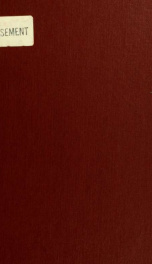Wine online : search costs and competition on price, quality, and distribution

A fundamental dilemma confronts retailers with stand-alone sites on the World Wide Web and those attempting to build electronic malls for delivery via the Internet, on-line services, or interactive TV (Alba et al. 1997). For consumers, the main potential advantage of electronic shopping over other channels is a reduction in search costs for products and product-related information. Retailers, however, fear that such lowering of consumers' search costs will intensify competition and lower margins by expanding the scope of competition from local to national and international. Retailers' electronic offerings have been constructed to thwart comparison shopping and to ward off price competition, dimming the appeal of many initial electronic shopping services. Ceteris paribus, if electronic shopping lowers the cost of acquiring price information, it should increase price sensitivity, just as is the case for price advertising. In a similar vein, though, electronic shopping can lower the cost of search for quality information. Most analyses ignore the offsetting potential of the latter effect to lower price sensitivity in the current period and ignore the potential of maximally transparent shopping systems to produce welfare gains that give consumers a long-term reason to give repeat business to electronic merchants (cf. Alba et al. 1997, Bakos 1997). We test conditions under which lowered search costs should increase or decrease pricesensitivity. We conducted an experiment in which we varied independently 3 different searchcosts via electronic shopping: search cost for price information, search cost for quality information within a given store, and search cost for comparing across two competing electronic wine stores (cont.) Consumers spent their own money purchasing wines from two competing electronic merchants selling some overlapping and some unique wines. We show four primary empirical results. First, for differentiated products like wines, lowering the cost of search for quality information reduced price sensitivity. Second, price sensitivity for wines common to both stores increased when cross-store comparison is made easy, as many analysts have assumed. However, easy cross-store comparison had no effect on price sensitivity for unique wines. Third, making information environments more transparent by lowering all three search costs produced welfare gains for consumers. They liked the shopping experience more, selected wines they liked more in subsequent tasting, and their retention probability was higher when they were contacted 2 months later and invited to continue using the electronic shopping service from home.. Includes bibliographical references (leaves 36-[40]) A fundamental dilemma confronts retailers with stand-alone sites on the World Wide Web and those attempting to build electronic malls for delivery via the Internet, on-line services, or interactive TV (Alba et al. 1997). For consumers, the main potential advantage of electronic shopping over other channels is a reduction in search costs for products and product-related information. Retailers, however, fear that such lowering of consumers' search costs will intensify competition and lower margins by expanding the scope of competition from local to national and international. Retailers' electronic offerings have been constructed to thwart comparison shopping and to ward off price competition, dimming the appeal of many initial electronic shopping services. Ceteris paribus, if electronic shopping lowers the cost of acquiring price information, it should increase price sensitivity, just as is the case for price advertising. In a similar vein, though, electronic shopping can lower the cost of search for quality information. Most analyses ignore the offsetting potential of the latter effect to lower price sensitivity in the current period and ignore the potential of maximally transparent shopping systems to produce welfare gains that give consumers a long-term reason to give repeat business to electronic merchants (cf. Alba et al. 1997, Bakos 1997). We test conditions under which lowered search costs should increase or decrease pricesensitivity. We conducted an experiment in which we varied independently 3 different searchcosts via electronic shopping: search cost for price information, search cost for quality information within a given store, and search cost for comparing across two competing electronic wine stores (cont.) Consumers spent their own money purchasing wines from two competing electronic merchants selling some overlapping and some unique wines. We show four primary empirical results. First, for differentiated products like wines, lowering the cost of search for quality information reduced price sensitivity. Second, price sensitivity for wines common to both stores increased when cross-store comparison is made easy, as many analysts have assumed. However, easy cross-store comparison had no effect on price sensitivity for unique wines. Third, making information environments more transparent by lowering all three search costs produced welfare gains for consumers. They liked the shopping experience more, selected wines they liked more in subsequent tasting, and their retention probability was higher when they were contacted 2 months later and invited to continue using the electronic shopping service from home..
Info about the book
Author:
Series:
Unknown
ISBN:
0538745401
Rating:
3/5 (3)Your rating:
0/5
Languge:
English
Users who have this book
Users who want this book
What readers are saying
What do you think? Write your own comment on this book!
write a commentif you like Wine online : search costs and competition on price, quality, and distribution try:
Other books by this author
Do you want to exchange books? It’s EASY!
Get registered and find other users who want to give their favourite books to good hands!





















